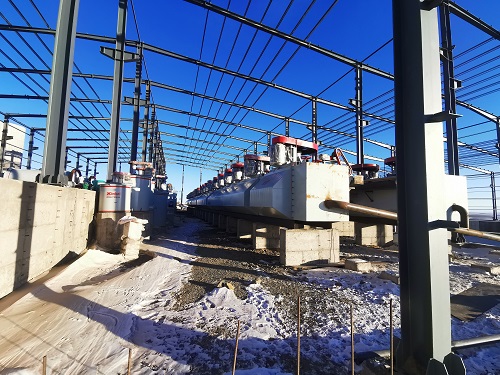Characteristics, application and beneficiation process of wolframite and scheelite
2025-02-14 Xinhai (1475)
2025-02-14 Xinhai (1475)
If you have any questions, please contact us through the following ways, we will give you more and better assistance!

In nature, there are many types of tungsten ores, and more than 20 types have been discovered. Among them, wolframite and scheelite have become the main sources of tungsten resources due to their high mining value. Tungsten, as a rare metal, is widely distributed in various types of rocks and has important industrial application value. However, wolframite and scheelite have complex compositions, and useful minerals are mostly fine-grained and often associated with other metals, which undoubtedly adds difficulty to their development and utilization. Therefore, the correct tungsten beneficiation process plays a key role in achieving ideal output and purity levels.
Wormite
Wormite mainly exists in mineralization types such as greisen, quartz vein, and porphyry. Its main components are ammonium tungstate (FeWO₄) and wolframite (MnWO₄). The crystal forms of wolframite are monoclinic and orthorhombic columnar. The crystals are plate-like or columnar, and the aggregates are mostly plate-like. In terms of color, wolframite will gradually darken with the increase of iron content, and is commonly chestnut to black with a metallic luster and a lighter streak color. Wolframite is mainly used for tungsten ore smelting and tungstate manufacturing.
Scheelite
Scheelite is a transparent to translucent mineral that exists in granular or massive form. Its main component is calcium tungstate (CaWO₄), which is mostly produced from contact metasomatic skarns, high-temperature hydrothermal veins and greisen. Its crystals are nearly octahedral tetragonal bipyramids. The color is usually gray, light yellow, lavender or light brown, with a glassy or diamond luster, and the streak is yellow-green. Scheelite is mainly used to produce tungsten iron and can also be used to make permanent magnets.

The beneficiation process of wolframite is mainly based on the easy-to-identify characteristics of its surrounding rock and gangue and the differences in surface physical properties. Gravity selection becomes its main selection process. The process includes four parts: ore pre-selection, graded gravity selection, comprehensive recovery of concentration, and fine mud treatment. Among them, the jig primary selection and shaking table tailings are the core links of gravity selection. For tungsten paragenetic ores, strong magnetic separation and flotation process will also be used. Large and medium-sized tungsten beneficiation plants have comprehensive recovery process flows for selected and associated metals. In the process of gravity separation, the first stage of grinding uses a rod mill, and the second stage of grinding can use a ball mill or a rod mill. The grade of tungsten concentrate is further improved by shaking table beneficiation, and the black wolframite, cassiterite, and niobium-tantalum ore are separated by magnetic separation and electric separation. Comprehensive recovery can obtain more than 20 products such as tin, molybdenum, and copper from tungsten ore.
For coarse-grained scheelite, gravity separation is still used for recovery, while fine-grained scheelite is generally recovered by flotation. Scheelite has good floatability, and the commonly used flotation processes are mainly normal temperature method and heating method. The room temperature method is more commonly used in quartz vein mines and mines with less calcium minerals. Heating flotation has strong adaptability to ores and stable concentration indicators. It is widely used in scheelite-calcite-fluorite ores. Scheelite beneficiation is generally divided into roughing section and beneficiation section. The roughing section aims to maximize the grade of rough concentrate, while the beneficiation section is to meet the market demand for tungsten concentrate. Therefore, it is usually necessary to adopt a more complex process and go through multiple sorting to obtain qualified tungsten concentrate.
Summary
As the main source of tungsten ore resources, wolframite and scheelite have an important position in the industrial field due to their unique physical and chemical properties and broad application prospects. Although its composition is complex and often associated with other metals, the recovery rate and purity of tungsten can be effectively improved through scientific and reasonable beneficiation technology. The re-selection process of wolframite and the flotation process of scheelite have their own characteristics and are suitable for ores of different particle sizes and properties. In the future, with the continuous advancement of technology, tungsten ore beneficiation technology will become more efficient and environmentally friendly, providing strong support for the sustainable development of tungsten resources.